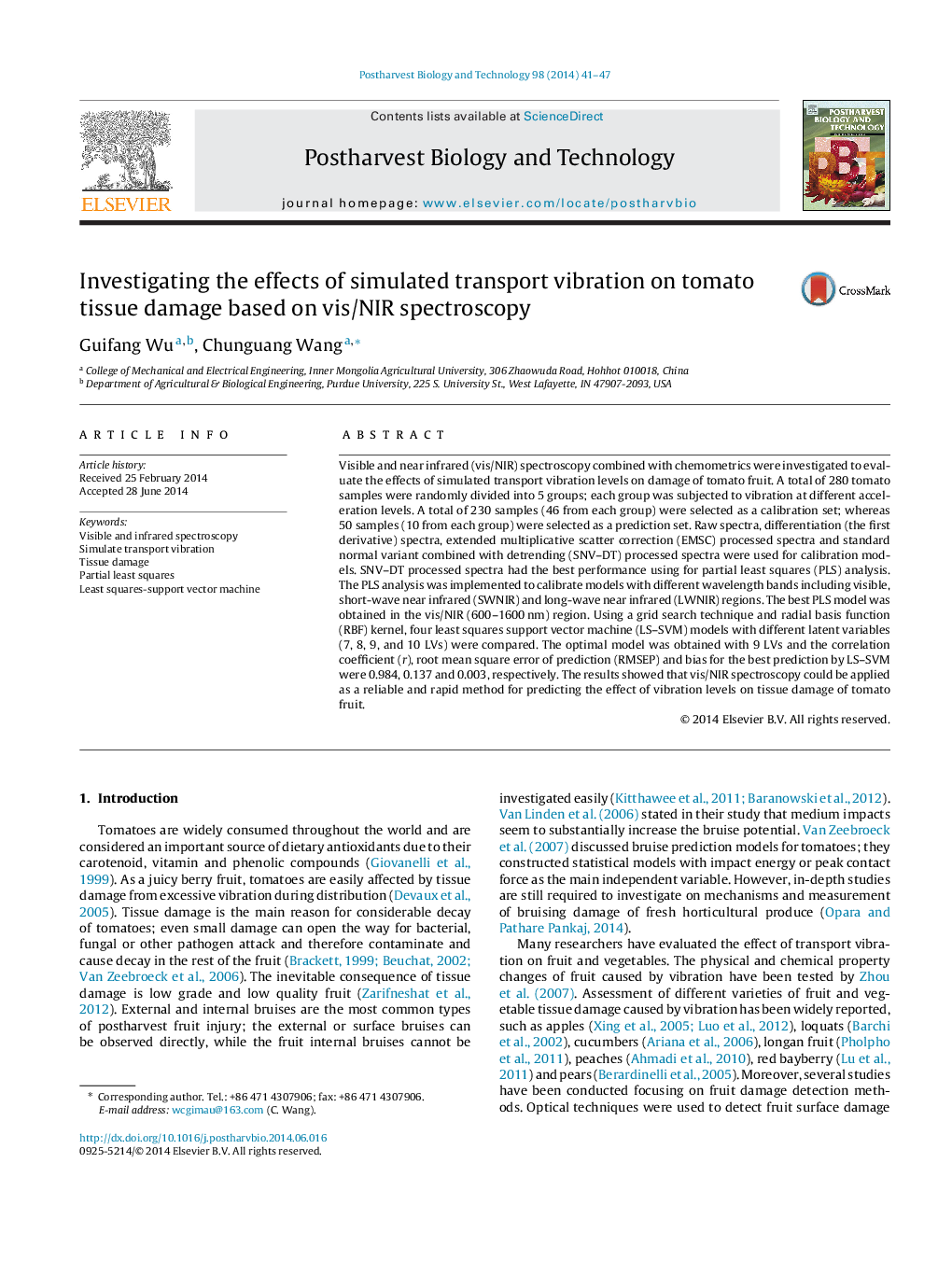| کد مقاله | کد نشریه | سال انتشار | مقاله انگلیسی | نسخه تمام متن |
|---|---|---|---|---|
| 4518239 | 1624996 | 2014 | 7 صفحه PDF | دانلود رایگان |

• Excessive vibration can cause damage in tomatoes.
• Vis/NIR spectroscopy has the capability to predict tomato damage resulting from vibration.
• SNV–DT preprocessing method increased the recognition ability of a spectral model.
• Spectra at 600–1600 nm was the best detection region in this study.
• The optimal model was obtained with least squares support vector machine.
Visible and near infrared (vis/NIR) spectroscopy combined with chemometrics were investigated to evaluate the effects of simulated transport vibration levels on damage of tomato fruit. A total of 280 tomato samples were randomly divided into 5 groups; each group was subjected to vibration at different acceleration levels. A total of 230 samples (46 from each group) were selected as a calibration set; whereas 50 samples (10 from each group) were selected as a prediction set. Raw spectra, differentiation (the first derivative) spectra, extended multiplicative scatter correction (EMSC) processed spectra and standard normal variant combined with detrending (SNV–DT) processed spectra were used for calibration models. SNV–DT processed spectra had the best performance using for partial least squares (PLS) analysis. The PLS analysis was implemented to calibrate models with different wavelength bands including visible, short-wave near infrared (SWNIR) and long-wave near infrared (LWNIR) regions. The best PLS model was obtained in the vis/NIR (600–1600 nm) region. Using a grid search technique and radial basis function (RBF) kernel, four least squares support vector machine (LS–SVM) models with different latent variables (7, 8, 9, and 10 LVs) were compared. The optimal model was obtained with 9 LVs and the correlation coefficient (r), root mean square error of prediction (RMSEP) and bias for the best prediction by LS–SVM were 0.984, 0.137 and 0.003, respectively. The results showed that vis/NIR spectroscopy could be applied as a reliable and rapid method for predicting the effect of vibration levels on tissue damage of tomato fruit.
Using vis/NIR spectra to assess the effect of simulated transport vibration on tissue damage of tomato fruit.Figure optionsDownload as PowerPoint slide
Journal: Postharvest Biology and Technology - Volume 98, December 2014, Pages 41–47